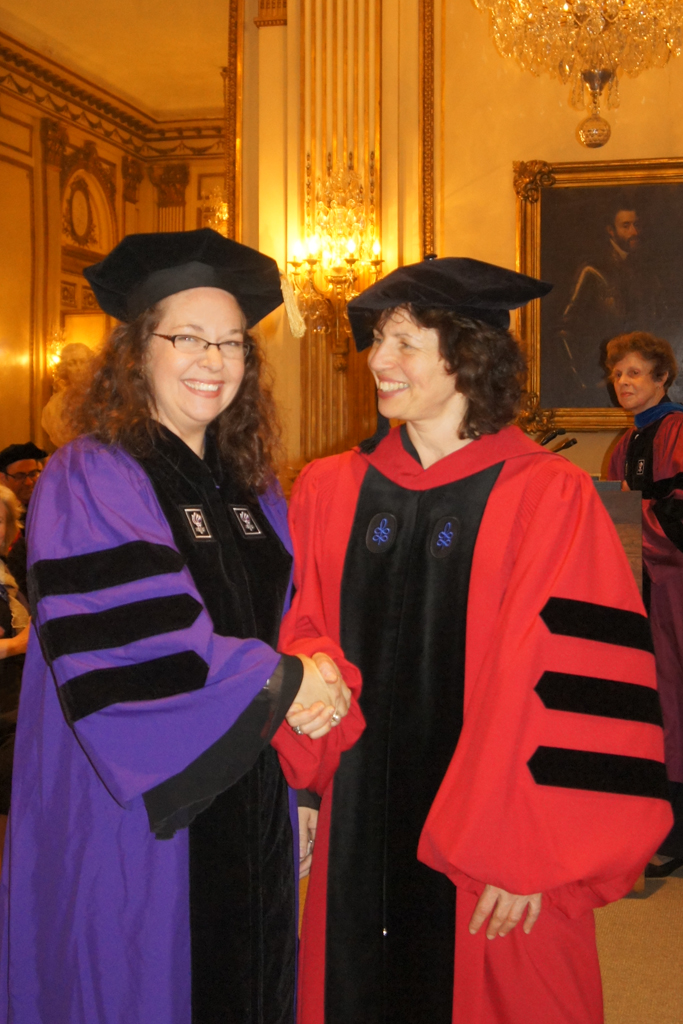It is my great pleasure to announce the successful defense of my Ph.D. dissertation, on which the Art of Counting project is based. On Friday, January 21, I met my advisor, David O’Connor, my readers, Ogden Goelet and Diana Craig Patch (Associate Curator, Department of Egyptian Art at the Metropolitan Museum of Art) , and James McCredie, at the Institute of Fine Arts, New York University, to defend The Integration of Quantitative and Qualitative Research in a Study of the Regalia of Ramses III. This dissertation focused on the proper application of quantifiable methods to the study of visual material. For the case study demonstrating these processes, I chose to investigate the king’s costume as depicted at the memorial temple of Ramses III at Medinet Habu. Through this effort, in addition to validating numerous patterns intuitively recognized by Egyptologists, many patterns of attribute usage that had not previously been noticed were quickly revealed. This demonstrated the validity of the methodology and suggested its broader potential.
The success of this website played a role in my victorious defense, and I have you, the Art of Counting community, to thank. The impact that the Art of Counting project has already had on Egyptology, and its future potential, influenced the positive outcome of the defense. Every member of the Art of Counting team has, to varying degrees, aligned themselves with the philosophy of this shared open data platform. With the dissertation now complete, construction of the next version of the database will be stepped up to provide the collaborators with project-specific entry layouts so that they may begin recording their data following this validated model. In the meantime, I will focus on adding monuments to the database. These actions will result in a vastly increased dataset that will permit a variety of analyses and facilitate research across a broad range of Egyptological material. In time, this database will expand beyond Egypt to provide the same research and analytical capabilities to specialists in other eras. This method is expected to have a fundamental impact on art historical research.
Special thanks go to Lili Garrard, my primary analytical partner, who guided me through the statistical aspects of the dissertation. Lili has generously lent her time and knowledge to this project for almost four years now and we plan to continue our collaboration for many years to come. This dissertation, Egyptological though it may be, would simply not have been possible without the advice and support of Lili and nearly a dozen other professional statisticians and data analysts who guided me on the path.
Although the dissertation is not yet available online, several articles on the significance of royal regalia based on research performed in the dissertation have been published on this website. These include brief examinations of the king’s sandals, the atef crown, and the ankh held in his hand, and in depth discussions of the red looped sash and lappet wig (2 of 3 parts so far). These articles have already generated much interest; for instance, the red looped sash discussion has been read by more than 1,900 visitors and the examination of the king’s sandals has had almost 1,200 readers. With the successful completion of the dissertation, additional research results can now be presented. This includes discussion of clusters of regalia items that were used together to support the king in various royal roles, as revealed by the statistical analyses.
Thank you for your continued interest in this collaborative project!



Congratulations on your PhD – you will have to update your sidebar from “Ph.D. candidate” to “Masters candidate”.
This insight may give you a place in history as the originator of a technique that transforms our knowledge of the past.
Best wishes and best of luck for your future.
Thank you for the congratulations and well wishes, Paul! It is my goal that this project results in a very beneficial tool for art historical research across all eras.
I admit to being a bit perplexed by your “Masters candidate” comment, but assume you are coming from a system with different designations. A Ph.D. is the highest degree in the U.S. education system; a Masters degree is required before beginning a Ph.D. (I received my first in 2000).
Thank you again and please keep enjoying our site!
All the best,
Amy
Great news. Congratulations!
Thank you so much, Ben!
Dear Amy,
Congratulations with your PhD !!
I admire the work you have done
Thank you very much, Gaspard! I sincerely hope that this project produces an extremely useful tool for research. Hope your work on QV 44 is going great–looking forward to seeing your results!
Best,
Amy
Congratulations Amy
Thank you very much, David! Certainly relieved to be through this last stage of a long journey.
Best,
Amy
Oh my gosh, i missed this! MANY MANY CONGRATULATIONS!!! woo-hoo!!! clicking heels in joy!!
Thank you so much, Kasia! Defense happened only a few days before the revolution began; I’ve been meaning to get an update letter out to all the collaborators, but it has been so crazy. We expect to have the beta database ready soon–if you will be in Chicago next week, I should have a shell with me.
Thank you again! Hope to see you soon.